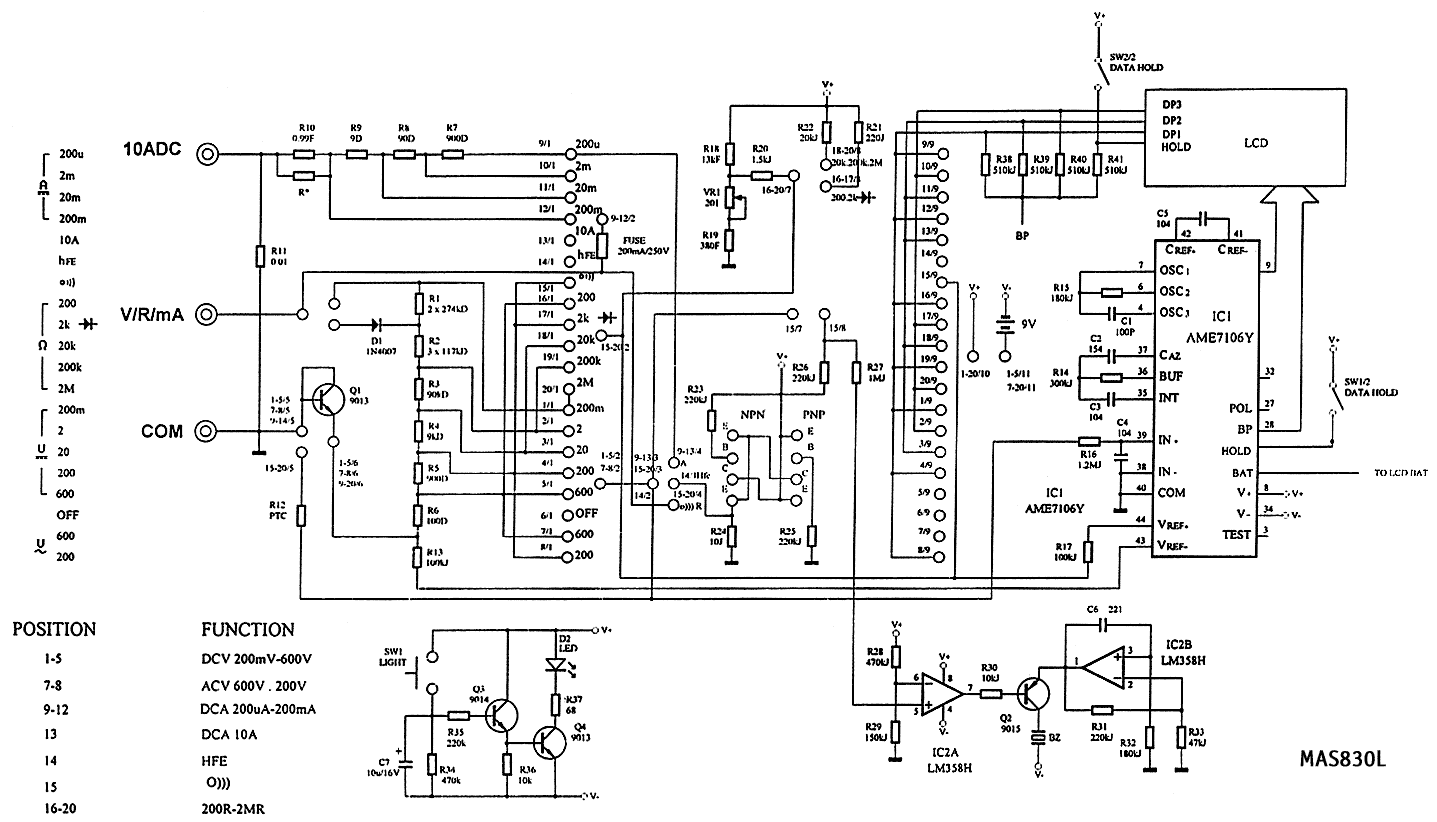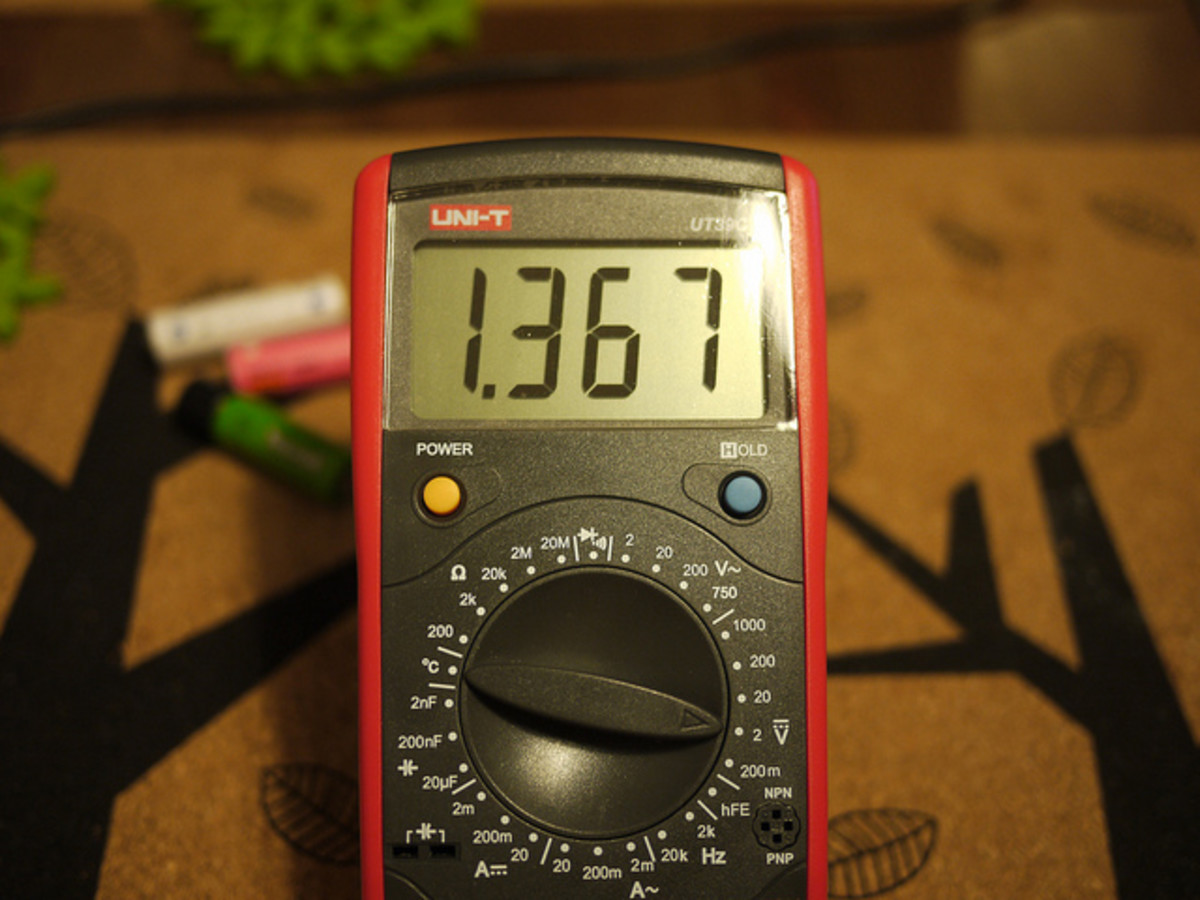Digitech Qm-1500 Manual
Posted By admin On 22.09.19. Products.

Using a multimeterThis guide starts off with the basics of a meter, proceeds to give athorough specification for our example meter, then explainshow to make measurements, and finishes up with somehints and notes.The example meter that we are demonstrating is typical of many economical digitalmultimeters that you can purchase, this guide will be useful for all these meters.This guide is concentrating on how to use your multimeter. It all cameabout, frankly, when we started giving away free multimeters to our design clients - andwe realised there was no easy instruction manual for a meter - all that was supplied wasa list of (sometimes non-sensical) warnings, and a specification list. Self manual lymphatic drainage massage. Admittedly wehave a specification list here, but we tell you to ignore it if it does not make sense,and we have reduced the warnings to the three that we think really matter.We can supply the meter direct - but our costs are a little higher than the bigretailers. Recently the same meter has availble only in a dark grey colour case.There is also a cheaper version in a plain rectangular case with no rubber holster -great for students, or a second meter. We charge $9 to mailout these meters within Australia - (email for a quote if you want it sent overseas, buthonestly it probably isn't worth it, we get charged about $40+ here in Australia to shipanything internationally). Testing batteriesAs tersely explained to the left, a battery can be tested, seperately,using a multimeter - but is best tested (supplying power) in the equipment.This is difficult for most people.An alternative is to buy a purpose built battery tester: This is justa meter with a resistor to draw power from the battery, so it is testedunder load, as it should be.
Multimeters are very cheap to buy and are one of the most commonly used pieces of electronics test equipment. Although basic operational multimeter instruction may be given when the test meter is bought, details of how to use the multimeter to test circuits and gain. Digitech QM1500 Digital Multimeter: This is the ideal first multimeter. Uses plug-in 4mm probes. Order Code: QM1500 - In Stock. Relative mode. Data hold. Diode test. Audible continuity. Min/max storage mode. Auto or manual range. Auto power-off. H.more details. Price $79.95. Digitech QM-1500 Multimeter. Out of stock. 140g; Battery type: 9V (included). Included: Multimeter, leads, battery and instruction manual.
A simple cheap battery tester is(For- thank you for your help)1.5V Batteries - A Fresh battery reads 1.56V, A battery is perhapshalf used at 1.35V, and is pretty dead by the time it reaches 1.1V.(Matching figures for 9V: Full = 9.36V, Half = 8.1V, Dead = 6.6V).However, not every item is the same, and some equipment needs abattery with low internal impedance. The amount of current a batterycan deliver is not reliably reflected by its open circuit terminal voltage.The best way to check, if in doubt, is to measure battery voltage whilethe equipment is running.Lead acid batteries - A 12V lead acid battery generally measures13.4 to 14V while on charge. When off charge, a full battery will be up atabout 12.8V, a discharged battery at about 11V. If a lead acid battery isin the range of 6-8V it is probably in pretty bad shape, and over discharged,or with a shorted cell. A shorted cell makes a 12V battery pretty much useless.Lithium Ion batteries - Lithium Ion batteries are the newer type of rechargeablebattery.
When fully charged the voltage rises to 4.2V, and at the end of charge thevoltage falls to 3.0V - or sometimes down to 2.7V depending on the product. However,these batteries need to be treated with caution. Use only the proper charger, do notshort circuit, and do not open them - Lithium incinerates on contact with water.

Digitech Qm-1500 Manual Pdf
Ifallowed to completely discharge these batteries are irreversibly damaged. Despite whatmanufacturers may tell you, these batteries are like any other - they will last 500-1000charge/discharge cycles if treated well, and that is all - then they need replacement.The older type of rechargeable battery is Nickel Metal Hydride (NiMh) andNickel Cadmium (NiCd).
These cells are often the same physical size as 1.5V batteries,but a slightly lower voltage: 1.25V when charged, 0.9V when discharged. These batteriesare about twice the weight of LiIons for the same capacity. NiCd and NiMh batteriestend to self-discharge over time, sometimes lasting only a few weeks between charges,whether or not they are used. A good example being older NiCd cordless drills - they alwaysseemed to have a discharged battery when you really need them! You cannot easilyreplace NiCd batteries with LiIon as they are different voltages - you need to replacethe whole product, and in cordless drills the batteries are not accessible in any case.There are LSD (Low Self Discharge) NiMh and NiCd batteries available that largelyalleviate this problem, the leading brand is Sanyo Eneloop.Elements/Heaters - The resistance of a heater can be calculated by firstfinding its rated current, and then finding its resistance using ohms law.The heaters current is:Power / Voltage = Currente.g. A 1200W 240V heater uses 5 Amps.Then the heaters resistance is:Voltage / Current = Resistancee.g.
A 240V 5A heater is 48 ohms.Knowing an expected resistance, if the heater was measured and found tobe wildly different from these values, you would guess that it was faulty.However, the ohms law calculations are not useful for halogen lights ortransformers. The 'cold' resistance of a light bulb is frequently as little asa tenth of its running resistance - so a 500W 240V halogen light bulb,which you would calculate to have a resistance of about 120 ohms, actuallyhas a 'cold' resistance that measures closer to 12 ohms.Power supplies - please note our warning at the start of this document -it is usually quite dangerous to measure the short circuit current of abattery or power supply - don't try it! If a power supply is unregulated,frequently the output voltage will be up to a third higher than its rated voltagewhen there is no load connected.
'12V' regulated supplies for equipmentthat would normally be battery operated are usually 13.4 - 13.8V, not really 12Vat all! Power supplies for digital logic are normally regulated to +/-5% or better,so you would expect a 5V power supply to be 4.75 to 5.25V without exception.Components in circuit - Normally you have to remove a component froma circuit in order to reliably measure its value. For instance, if a 400 ohm relay coilhad a 1N4002 diode across it, it would be quite difficult to reliably measure eitherthe resistance of the relay coil, or the foward voltage of the diode - any measurementof one is likely to have the other components interfere with the reading.Almost all circuits are like this to some degree. Most components cannot be measuredin circuit. The only thing that can be reliably be said is that you will not measure aresistance greater than a resistor value - the circuit can only lower the resistance reading.Contacts, because they generally read as a dead short: '0.0' are not much affected bybeing in circuit. To some extent it is safe to test contacts in circuit.
Digitech Cat Qm-1500 Manual

Ofcourse there has to be an exception: If there are two or morecontacts in parallel, and they read as continuous, you know that atleast one is closedbut you cannot be sure which (if any) of them is open.Fast changes - If a measurement is not stable for a second or so, it isdifficult to get a reliable reading with a meter. An oscilloscope is needed for this.Cables - Cables are easily tested with a meter on continuity setting.Usually cable faults will either be an open circuit or short circuit.